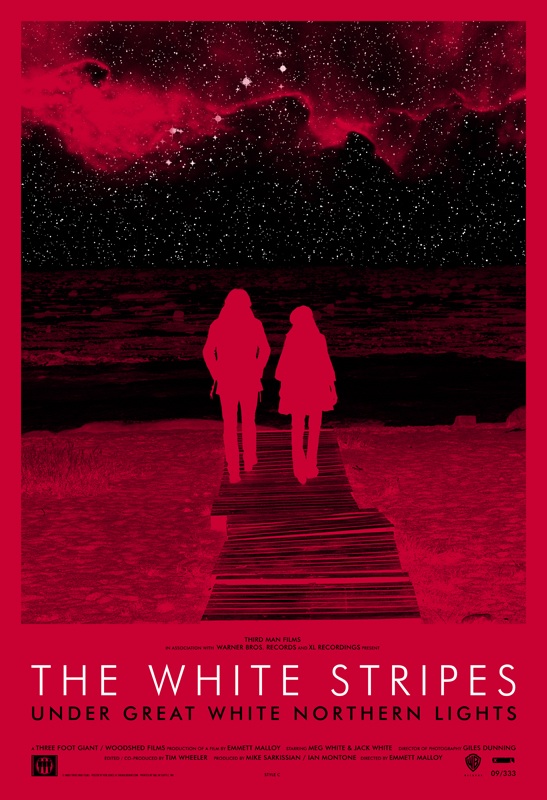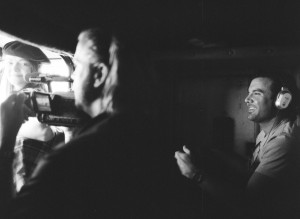Were Jack and Meg White married? Are they brother and sister? If you know the answer, suspend your disbelief for The White Stripes Under Great Northern Lights, the mesmerizing new documentary by Emmet Malloy.
It all begins in the summer of 2007, on their 10th anniversary, as the White Stripes tour Canada for the very first time. True to form, they whiz through the country’s every single province playing a one-note show (see below), an impromptu performance in a transit bus and even one on a boat. No town is too small, none too big, hitting the Yukon’s Art Centre (capacity 428) to Toronto’s Molson Amphitheatre (capacity 16,000) for a country of fans that eagerly waited a full decade to see them live.
Shortly thereafter, they cancelled all their upcoming US tour dates due to Meg’s “acute anxiety” cited by a band representative.
The culmination and unraveling of this is all captured beautifully in the subtext of the documentary. The mystery that is Meg White is elegantly captured by Malloy, whose intimate portrait of the band was facilitated by the shorthand relationship he formed by directing their music videos. In one scene, Jack flips the back of his guitar to reveal a picture of Greta Garbo. One can’t help but infer the symbolism to Meg, who similarly possesses the elusive beauty of the silent movie star. Meg’s silence is even addressed in the documentary as Jack rampantly explains it’s not a result of him being wildly vocal. Meg responds shyly she’s simply quiet with heartbreaking honesty.
In many ways, that push/pull relationship, and the yin and yang of their emblematic red and white band colors, is even represented in their music. Take the song “Little Acorns”, for instance, as Jack hammers his axe in the song’s bridge while Meg adjusts the tempo back by pausing on her drum beat before pounding it back with ferocity.
The White Stripes Under Great Northern Lights plays more cinema verite, less like a run of the mill rock documentary, and explores the band’s relationship, emotions and insecurities.
The common misperception by media is that they’re a novelty act. It’s attributed deceptively to their two-tone red and white colored wardrobe, inspired by the De Stijl movement, and heavily influenced sound of blues masters Robert Johnson and Son House, the latter of which wrote Jack’s favorite song, “Grinnin’ In Your Face”, which is revealed in the recently released documentary that teams him up with Jimmy Page and The Edge, It Might Get Loud. The subject is examined well in both documentaries, but its resonance is on full display here. Jack despondingly quotes an early Spin magazine article that famously once wrote “Everything about the White Stripes is a lie,” reminiscent of Rolling Stone magazine’s assessment that Led Zeppelin possesses “little that its twin, the Jeff Beck Group, didn’t say as well or better three months ago”.
As the documentary seamlessly drifts from this subject into the end of the third act, Meg leans her head on Jack’s shoulder as he performs “White Moon” on the piano bringing her to tears. It’s reminiscent to the final scene in Lost In Translation as Scarlett Johansson and Bill Murray say goodbye to one another as she whispers inaudibly in his ears. In both cases, the mystical nature of what we don’t see or know is what makes it so potent. In the case of the White Stripes, you have to ask yourself if the nature of their relationship really even mattered in the first place. Love can mean many things and it’s almost as inexplicable as it is magical.
White Stripes Under Great White Northern Lights premieres at the Toronto International Film Festival on September 18th.



